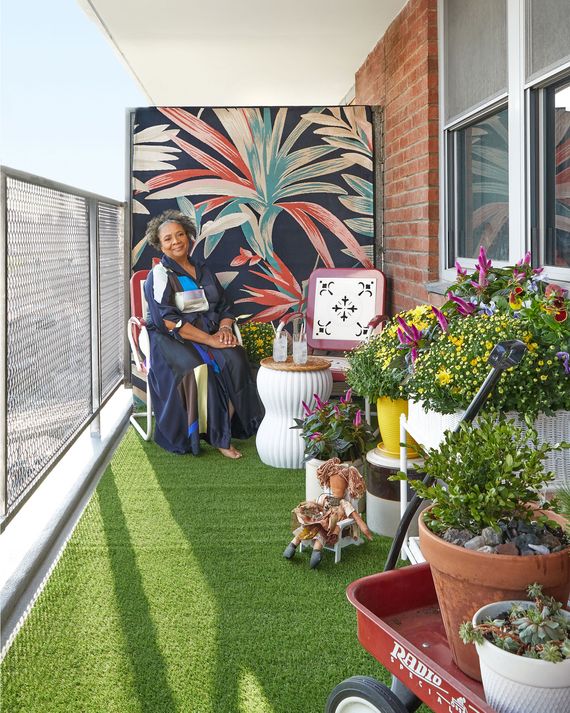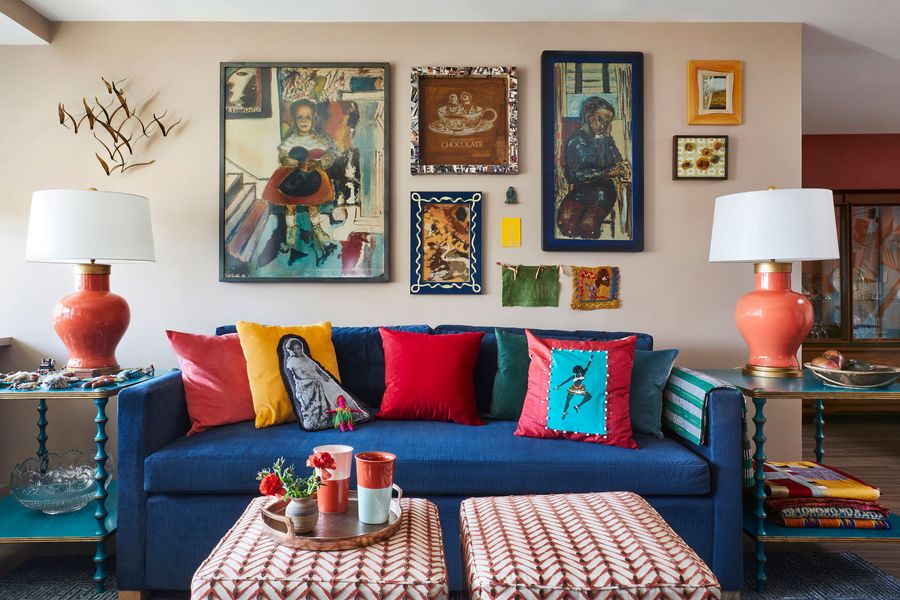
Cassandra Bromfield was raised in this apartment. Her mother, Elaine Bromfield, was a schoolteacher, and in 1964, she bought this 894-square-foot two-bedroom in South Williamsburg’s Lindsay Park, an affordable-housing cooperative that was then brand new. At the time, Cassandra was about 8 years old; she grew up to become a fashion designer and artist.
“When you look at the Mitchell-Lama co-ops,” which were designed to appeal to middle-income families like her own who might otherwise have left the city, “there was a great deal that they offered,” says Bromfield. “We grew up with a pool; I mean, there were so many amenities when you think about it. There were things they promised — like, the pool was supposed to be a skating rink in the wintertime; that never happened. But we had a pretty good time here.”
And she still does. “I’m a person who’s been here since the first brick. I saw those buildings go up. I didn’t leave. I’m still here,” she says in a short 2018 documentary, Into My Life, she fashioned from her mother’s Super 8 home movies and old photographs (you can watch it on pbs.org/pov).
Bromfield’s mother passed away in 2008, and in 2016, she decided that the apartment needed some refreshment, starting with the kitchen. She contacted interior designer Keita Turner, whom she had met at an event in the home of Malene Barnett, the founder of the Black Artists + Designers Guild. But then the other rooms called, as did removal of the popcorn ceilings and putting down a new floor.
“Although my mother was creative,” says Bromfield, who inherited her parents’ artistic sensibility, “she wasn’t a decorator.”
“The first time I walked in, she had that closet door painted in what I thought was a retro-’50s pattern,” says Turner. “I thought she should finish it and make it a statement.” Bromfield has taken her time completing her painted wall as she has refurbishing the rest of her home. It has happened over years of packing up, editing down, and honoring her family while making the apartment her own. Turner suggested they frame some of her father’s artwork, and a painting he did of Bromfield when she was little now has pride of place in the living room. She has not seen her father, Samuel Bromfield, since that time. “Hopefully, wherever he went, he continued doing art,” she says. “I hope that that was the truth.”
There are many sculptures of bulls — her mother, a Taurus, collected them — as well as the beaded dolls that Bromfield has made over the years and the artwork of family members. There is a new way to enjoy the terrace that overlooks the neighborhood, set with chairs and artificial grass turf and potted plants.
“There is a drain out there,” Turner says of the terrace floor, “and I knew that she used it for dyeing fabric, and I said, ‘Don’t you want to sit out there?’ I convinced her on the grass turf, and we hung a rug to hide that partition.”
“The chairs are new,” Bromfield says. “But I love that whole vintage look, and they reminded me of something that my grandparents had.”
*A version of this article appears in the February 1, 2021, issue of New York Magazine. Subscribe Now!













